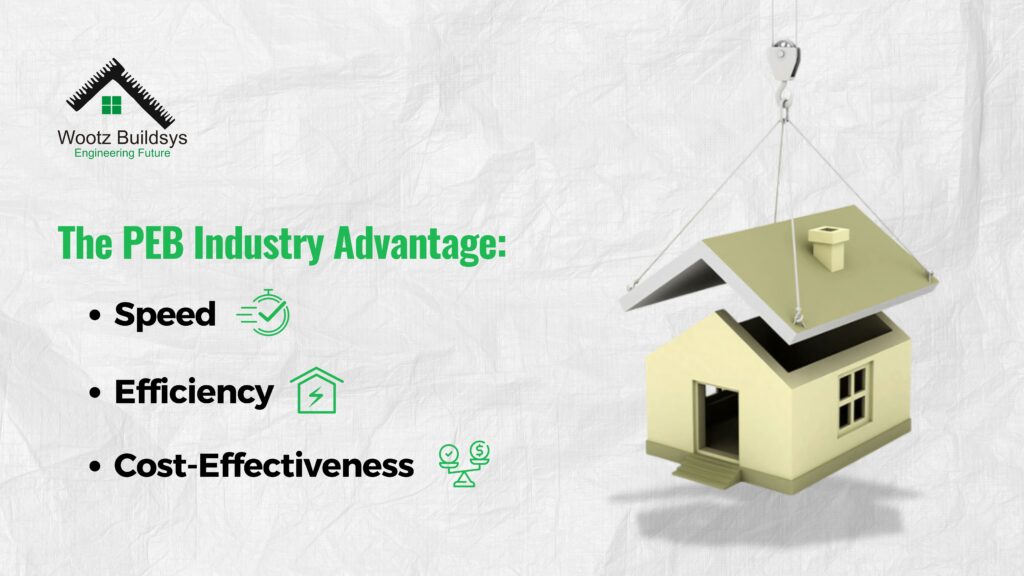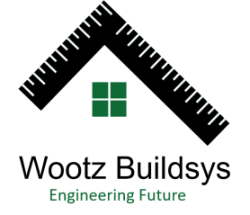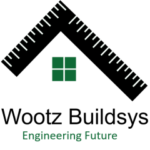
Pre-Engineered Buildings (PEBs) are rapidly becoming the go-to solution for modern construction projects, and for good reason. Whether it’s for industrial, commercial, or even residential purposes, the PEB industry has gained significant attention due to its remarkable advantages. PEBs offer a compelling blend of speed, efficiency, and cost-effectiveness, making them an ideal choice for a wide range of construction needs. Here, we’ll delve into the core benefits of the PEB industry, particularly focusing on how it leverages speed, efficiency, and cost-effectiveness to outperform conventional construction methods.
What is the PEB Industry?
The PEB industry revolves around the concept of designing and manufacturing building components off-site, then assembling them at the construction site. These components are pre-engineered, meaning they are customized to fit the specific requirements of a project before arriving at the site, ensuring a streamlined and efficient construction process.
From warehouses to office complexes, the PEB approach is highly flexible, catering to various building types and offering several advantages over traditional construction practices.
Speed: Completing Projects in Record Time
One of the most significant benefits of PEB construction is speed. In traditional construction, projects can be delayed due to the long duration required for on-site fabrication, unpredictable weather conditions, and labor availability. The PEB industry has revolutionized this process by shifting much of the construction work to the factory.
1. Off-Site Fabrication: PEB components are manufactured in a controlled environment with strict quality checks. This off-site production eliminates the chances of delays due to weather or labor shortages, drastically reducing the time required for on-site assembly.
2. Modular Assembly: Once the components arrive at the construction site, the assembly process is quick and straightforward. All parts are designed to fit perfectly, ensuring fast and error-free construction.
3. Reduced Construction Time: On average, PEB projects can be completed in less than half the time of conventional building methods, providing a significant advantage for businesses and industries that need to get up and running quickly.
Efficiency: Optimized Design and Resource Utilization
PEB systems are not only fast but also highly efficient, both in terms of design and resource utilization. This efficiency stems from several factors:
1. Custom Design: The design of a PEB is tailored to the exact requirements of the project. This means that every piece is engineered to meet the building’s structural needs without excess materials or waste. The use of sophisticated software in the design phase ensures precision and optimization.
2. Streamlined Construction: Since the entire building is pre-engineered, every part fits perfectly, minimizing rework and material wastage on-site. This not only speeds up construction but also makes it more sustainable.
3. Energy Efficiency: PEB structures can be optimized for energy efficiency by integrating features like insulation, ventilation, and natural lighting. Many also support modern energy-saving technologies, such as solar panels, helping to lower long-term operating costs.
Cost-Effectiveness: Maximizing Value with PEB
Cost is often the most significant factor in construction projects, and this is where the PEB industry truly excels. The cost advantages of PEB systems come from several key aspects:
1. Lower Initial Costs: Since PEB components are fabricated in bulk and standardized to a large extent, the material costs are often lower than those in traditional construction. Additionally, fewer labor hours are required due to the ease of assembly, reducing labor costs significantly.
2. Reduced Maintenance: PEB structures are known for their durability and low maintenance requirements. The use of high-quality materials, such as galvanized steel, ensures that PEB buildings are resistant to weathering, corrosion, and other environmental factors that typically require costly maintenance in traditional buildings.
3. Minimized Wastage: The pre-engineered nature of PEB systems ensures that material wastage is kept to a minimum. Since every component is manufactured to exact specifications, there is very little scrap or unused material, which translates into cost savings.
4. Long-Term Savings: Beyond the initial savings in construction, PEB buildings often come with lower long-term operational costs. Their energy efficiency, durability, and reduced maintenance needs all contribute to lower overall expenses throughout the building’s life cycle.
Conclusion
The PEB industry has transformed the construction landscape with its unmatched speed, efficiency, and cost-effectiveness. As businesses continue to demand faster project completion and more economical building solutions, PEB systems stand out as the future of construction. By reducing construction time, optimizing resource use, and cutting costs, the PEB approach offers a powerful alternative to traditional building methods that is hard to ignore.
Whether you’re planning to construct a warehouse, factory, or office space, the advantages of PEB are clear. It’s a solution that not only meets the immediate needs of construction but also provides lasting value through its durability and efficiency.
Frequently Asked Questions (FAQs)
Q. What types of buildings can be constructed using PEB systems?
PEB systems are highly versatile and can be used for various types of structures, including warehouses, factories, office buildings, shopping malls, and even residential houses. The flexibility in design makes PEB suitable for almost any construction need.
Q. How long does it take to construct a PEB building?
The construction time for a PEB building is typically 50% faster than traditional methods. Depending on the size and complexity of the project, construction can take anywhere from a few weeks to a few months.
Q. Are PEB structures durable?
Yes, PEB buildings are incredibly durable. The use of high-quality steel and protective coatings ensures that the structure can withstand extreme weather conditions and last for decades with minimal maintenance.



